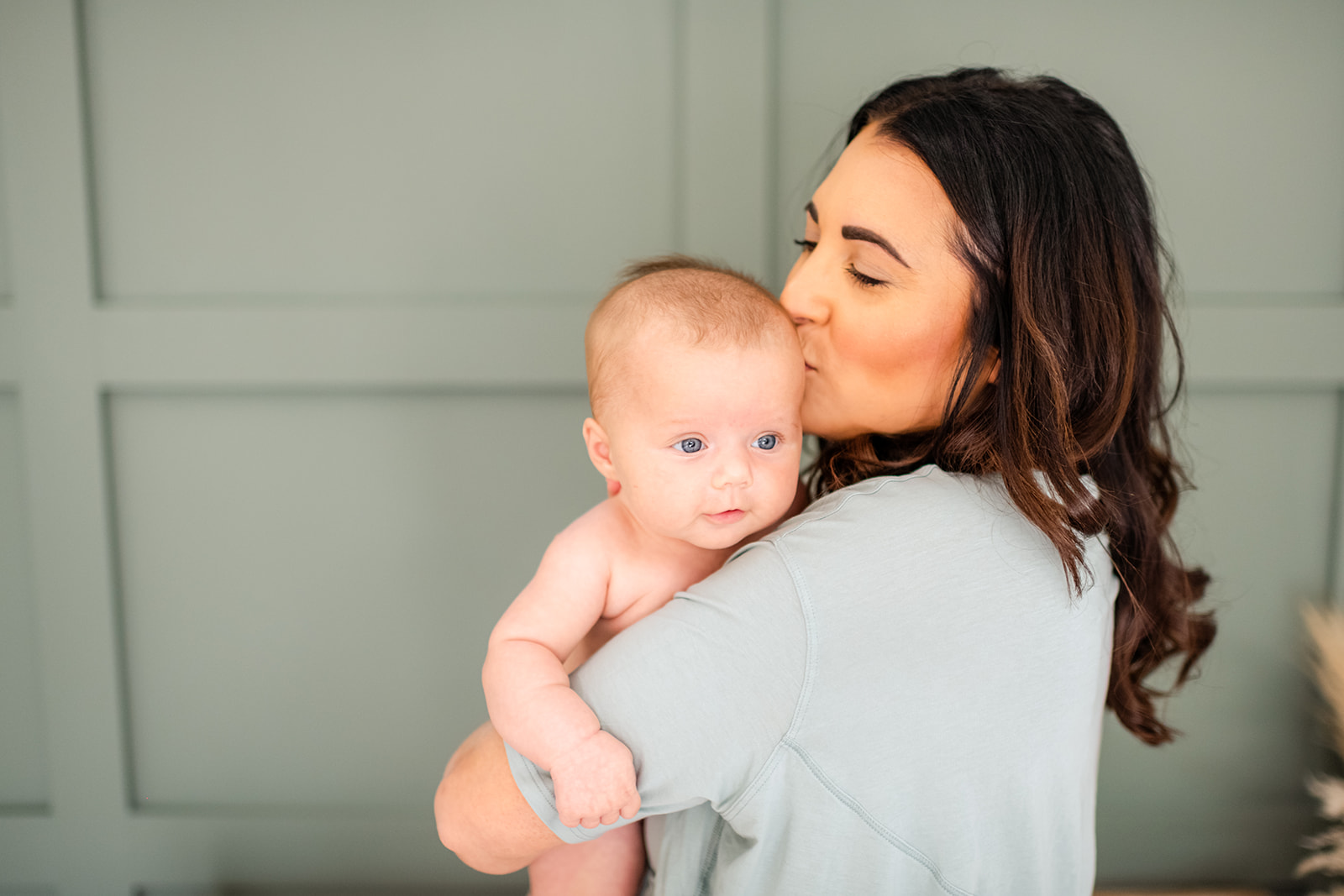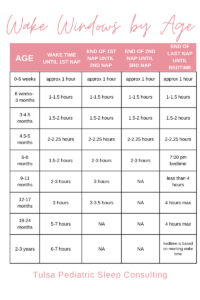A pretty simple way to help your baby or toddler sleep better is to pay attention to how long they are awake! You should watch their wake windows.
What are wake windows?
A wake window is the amount of time your baby or toddler is awake between one nap and the next. The window starts from the time your baby or toddler wakes up in the morning or from a nap. I do not start the window once you have gotten your child out of the bassinet or crib, especially if they have been awake in there for awhile. That still counts as wake time! The window ends when you lay your child back down in the bassinet or crib again. You may see your child moving around on the baby monitor for a little while after going down for a nap or going down at bedtime – and that’s okay!
Do wake windows include feeding time?
Yes! They include everything that happens after your baby or toddler wakes up. This includes feedings, playing, and even the bedtime routine. This is especially important to remember in the newborn phase, when feedings can take some time. That means your newborn will not have a lot of awake time after they are finished eating.
Are wake windows evidence-based?
No, they are based on averages, therefore it is still important to remember that your baby or toddler is a unique individual and going by their sleepy cues is important too! Your goal is to find the balance between tired enough to fall asleep but not overtired. It is important to tune into your particular child, however, wake windows can still be a very useful tool!
Why are wake windows important? Do they even matter?
If your baby or toddler is awake too long, that can result in an overtired child who struggles to calm down enough to fall asleep or stay asleep. These babies may require outside help to go to sleep. Wake windows that are too short might mean your child just isn’t ready to go to sleep. If they do fall asleep the nap may be short. Like Goldilocks, you want to get that window just right. This will set your baby or toddler up to be able to fall asleep more easily and stay asleep longer. If you use wake windows in combination with an eat-play-sleep type of schedule, it is going to be much easier for you to know if your child is hungry or tired.
Are wake windows sometimes shorter?
There are two main causes I see for shorter wake windows. One is if your child takes a short nap. Anything less than about 45 minutes might mean your child is going to need a shorter wake window after waking up. The other common cause is if your child is sick. A sick baby or toddler is going to need to rest as much as possible!
Do wake windows increase throughout the day?
Typically, babies under six months will have approximately the same wake windows throughout the day. All wake windows will look similar until it’s time for them to go to bed. For babies or toddlers older than six months, the windows will vary throughout the day. It is common to have the shortest wake window at the beginning of the day and the longest at the end. The exception to this is with a baby taking a 3rd catnap. The window after a 3rd catnap should not be the longest one of the day.
What should wake windows be for babies?
Let me break down how to figure out your baby’s wake windows in three easy steps:
- Reference my Wake Windows by Age Chart.
2. Start with the recommended wake window range for your baby’s age. *Note: Babies born before 37 weeks should follow the recommended wake windows for their adjusted age.
3. Observe your baby around the time frame of the suggested window. Notice how your baby is acting AND what naps are like with the window you used. If your baby seems fussy, shoot for the shorter end of the wake window range. If she seems to be doing okay, you can aim for the longer end of the range. Try not to go over the max recommended time awake.
*Note: If you have a baby with an alert temperament, keep in mind that these babies are often really good at hiding their sleepy cues and then parents don’t notice they are tired until it’s too late. Since their cues can be invisible, don’t wait for the cues! Take your alert baby in a less stimulating room towards the beginning of their recommended window and see if you start to notice sleepy cues.
My first baby was highly alert from the very beginning. I didn’t know anything about wake windows back then and I think that’s one of the biggest sleep mistakes I made. She “seemed” fine so I kept her up for hours until she would become very overtired and very difficult to soothe to sleep. This is the main reason I am such a big proponent of watching wake windows!
What should wake windows be for toddlers?
Finding the right wake window for your toddler is similar to finding the right wake window for your baby. Again, you want to find the balance between being tired but not being overtired.
For your two or three year-old, you want the nap to start consistently around 1:00 pm. This usually means about a 6-7 hour window before the nap. The window after nap doesn’t matter much, but it is typically shorter than the one before the nap. You want to base bedtime on your child’s typical morning wake time. What you need to do is know exactly how much sleep your child needs and work backwards from the morning wake time to tell you what time your child should be ASLEEP. Bedtime should be about 15-30 minutes before that time.


